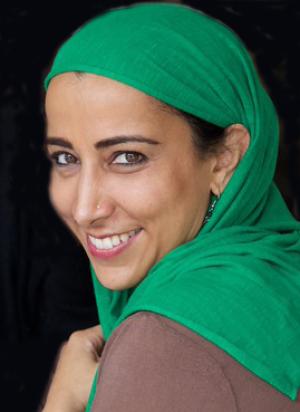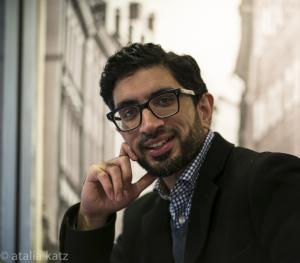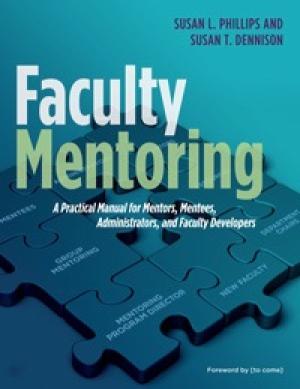Resources

Tat-siong Benny Liew Class of 1956 Professor in New Testament Studies College of the Holy Cross [O]ne thing above all—to step to one side, to leave … spare moments, to grow silent, to become slow—the leisurely art of the goldsmith applied to language: an art which must carry out slow

Theological school deans are not just theological leaders for their institution, they must be EDUCATIONAL leaders. That is, they must implement sound educational practices related to curriculum, instruction, supervision, assessment, and administration. There is a variety of ways to assess...

Najeeba Syeed-Miller Assistant Professor Claremont School of Theology In my last entry, I made curricular suggestions on teaching Islam and pluralism. The curricular suggestions continue as follows: Juristic Approaches to Diversity Ethics of Disagreement: This method is an internal modality for dissent for scholars of Islam who developed a systematized..
[row] [column lg="8" md="7" sm="6" xs="12" ] Description The workshop is designed in collaboration with the University of Wisconsin-Madison for full-time theological school faculty to conceive, build, implement, assess, and redesign an online or hybrid course to be taught in the 2016-17 academic year. The primary focus is on developing and implementing a successful free-standing course, through an exploration of sound pedagogical practice within the hybrid or online venue. The workshop will be offered in a hybrid design, blending elements of individual work, three face-to-face sessions with peers on the Wabash College campus, and collaborative work in a virtual learning community. During the first summer participants will engage in an intensive program that includes an online course bookended by meetings on the Wabash College campus. In two face-to-face sessions and an online experience, participants will design and build their own online or hybrid course. It is necessary for participants to teach the course they designed during the 2016-17 year and to gather assessment information from their students. Concluding with a session in the summer of 2017, participants will review their assessment information, share best practices, wrestle with deeper issues of pedagogy and sociology of learning, and revise their courses accordingly Goals Participants will be able to: Identify the unique opportunities and challenges for effective teaching and learning posed by each of the traditional, hybrid, and online teaching venues Explore issues of pedagogy and the sociology of learning communities as applied in the online and hybrid venues Make informed decisions about how to shape effective pedagogical and sociological strategies for the venue in which they will be used, in order to achieve the desired learning outcomes Design, construct, implement, assess, and revise a well-conceived and pedagogically sound course for delivery in an online or hybrid format Experience how to design and execute activities and processes in the various venues in order to achieve learning outcomes aimed at affective, relational, and formational outcomes. Application Materials Applications are closed. Application contact information form One-page cover letter answering the following questions: What do you believe is the potential for offering theological education in online or hybrid venues? What are the limitations and concerns you have to offering online or hybrid theological education? What is your motivation for participating in this workshop? What experience have you already had in using educational technology as part of your teaching practice, whether to enhance a face-to-face course, or to deliver a fully online or hybrid course? Keep in mind that you do not need to have had a great deal of experience with technology or online teaching, nor do you need to be without reservation about its potential. Academic CV (4-page limit) Letter from your dean, rector, or principal: confirming that you will teach this hybrid or online course during the 2016-17 academic year; identifying the learning management system support person at the institution who will provide IT infrastructure and support for the course; certifying that you will be ready to enter the first summer sessions with a course shell ready in your institution’s course management system. Please have this signed letter sent directly to you on institutional letterhead and include it with your application materials. Stipend The Wabash Center will cover all local expenses and travel to Crawfordsville, Indiana for the three face-to-face sessions. In addition, participants will receive a stipend of $3,400 for full participation in the online course and all face-to-face sessions. Read More about Stipend Payments Read our Policy on Participation [/column] [column lg="4" md="5" sm="6" xs="12" ] [su_spacer size="30"] [well] Applications closed January 15, 2016 [/well] [panel style="panel-default"] [panel-header] Workshop Information [/panel-header] [panel-content] Dates First Session: May 31-June 3, 2016 Wabash College Online Sessions: June 6-July 31, 2016 Second Session: August 4-6, 2016 Wabash College Third Session: May 23-26, 2017 Wabash College Leadership Team Steve Delamarter,George Fox Evangelical Seminary, Director Stacy Williams-Duncan, Curry School of Education, UVa Bridget Powell, University of Wisconsin-Madison Paul O. Myhre, Wabash Center Eligibility At least 5 years of teaching experience Teaching at the master’s level in an accredited seminary or theological school in the United States, Puerto Rico, or Canada Scheduled to teach a master’s level or doctor of ministry course in the 2016-17 academic year that is a hybrid or fully online format Institutional release time to participate fully in all sessions (f2f and online) [/panel-content] [panel-footer] For More Information, Please Contact: Paul O. Myhre, Associate Director Wabash Center 301 West Wabash Ave. Crawfordsville, IN 47933 800-655-7117 myhrep@wabash.edu [/panel-footer] [/panel] [of_interest_widget] Travel and Accommodations Philosophy of Workshops Policy on Participation Travel Reimbursement Form Procedures for Payment of Stipends [/of_interest_widget] [/column] [/row]

Nancy Lynne Westfield Associate Professor of Religious Education Drew Theological School Imagine this scenario: “YOU TOOK MY JESUS!” said the first-semester student who is feeling displaced, disoriented, disappointed and enraged while being overwhelmed, even defeated, by the unexpected convergence of seminary courses’ too dense readings along with the absence of.

Youshaa PatelAssistant Professor of Religious Studies Lafayette College Today, Islam is paired with violence so often that these two concepts have become virtually synonymous. Conversations are often wedged between criticisms that Muslims are doing too much violence or not doing enough to stop it. Jihad, the Islamic keyword that.

Cláudio Carvalhaes Associate Professor McCormick Theological Seminary Last time we talked about the body in the classroom. Our body, my body, the bodies of my students, are all shaped by institutional bodies that carry values, marks, love, deceptions, commitments and history. Just as our bodies carry constructions of race, gender,

Edward E. Curtis, IV Millennium Chair of the Liberal Arts & Professor of Religious Studies Indiana University School of Liberal Arts at IUPUI (Indiana University - Purdue University, Indianapolis)For the past fifteen years I have tried to teach about Islam as a religiously diverse tradition practiced by communities around

Tat-siong Benny Liew Class of 1956 Professor in New Testament Studies College of the Holy Cross It is that time of the year. After weeks and months of class sessions and office hours, the spring semester is now over. There is, of course, something left for us teachers to do

Faculty Mentoring offers a wealth of resources for justifying, planning, implementing, and evaluating faculty mentoring in one-on-one and group settings. Phillips and Dennison, faculty members at the University of North Carolina, Greensboro, ground their suggestions in decades of experience directing and consulting with the Faculty Mentoring Program at UNCG and in a comprehensive review of literature about the value of mentoring. The volume makes clear the benefits of mentoring to all involved: faculty mentees, faculty mentors, administrators, and institutions. Thoughtful mentoring programs aid in the recruitment and retention of pre-tenure faculty, connecting them more deeply to institutional life, orienting them to “the university’s mission and identity,” and helping them shape productive and sustainable attention to teaching, scholarship, and service (35). The authors demonstrate why formal mentoring relationships prove especially important to retain “diverse faculty, including minority and international faculty members” (35). When well executed, faculty mentoring helps “develop an academic atmosphere that mutually nurtures, supports, and further develops all faculty members’ teaching and research skills and assists them so that they feel part of a university/college community” (1). The book’s first chapter offers guidance to mentors, including logistics of meetings, topics for discussion, and insight about the experiences of new faculty members. Chapter two presents guidelines for establishing mentoring groups for new faculty and includes advice for group facilitators. Chapter three speaks directly to new faculty members and provides tips for having a successful mentoring experience, including selecting an appropriate mentor, setting meaningful and reasonable expectations for the relationship, and “self-assessment of the mentoring experience” (24). Chapters four, five, and six weigh in programmatically with suggestions for mentoring within departments, guidelines for institutional administrators, and wisdom for directors of faculty mentoring programs. Chapter seven combs higher educational literature and provides an overview of the benefits of, and rationale for, faculty mentoring. A list of references at the end of each chapter is supplemented by an inventory of books and Internet resources in the Appendix. In total, the book’s appendices span sixty-five pages (nearly half the volume) and provide resources easily modifiable to fit specific institutional contexts. The templates, worksheets, checklists, and evaluation tools provided will not only help new programs launch more quickly but also offer existing programs resources for assessing and improving current practices. This text speaks to a wide audience. The full volume will be useful for planners and directors of mentoring programs; individual chapters form stand-alone resources for their target readers (mentors, mentees, and administrators.) Faculty and administrators at institutions of all sizes will find usable insight in the text for mentoring programs funded at a variety of levels. Though geared toward the mentoring of early career faculty, the tools provided in Phillips and Dennison’s text may benefit even mid-career mentees. Finally, though written with mentoring efforts that are supported by institutions in mind, the volume also offers insight for those seeking or offering mentoring outside of formally run programs.
Wabash Center Staff Contact
Sarah Farmer, Ph.D
Associate Director
Wabash Center
farmers@wabash.edu